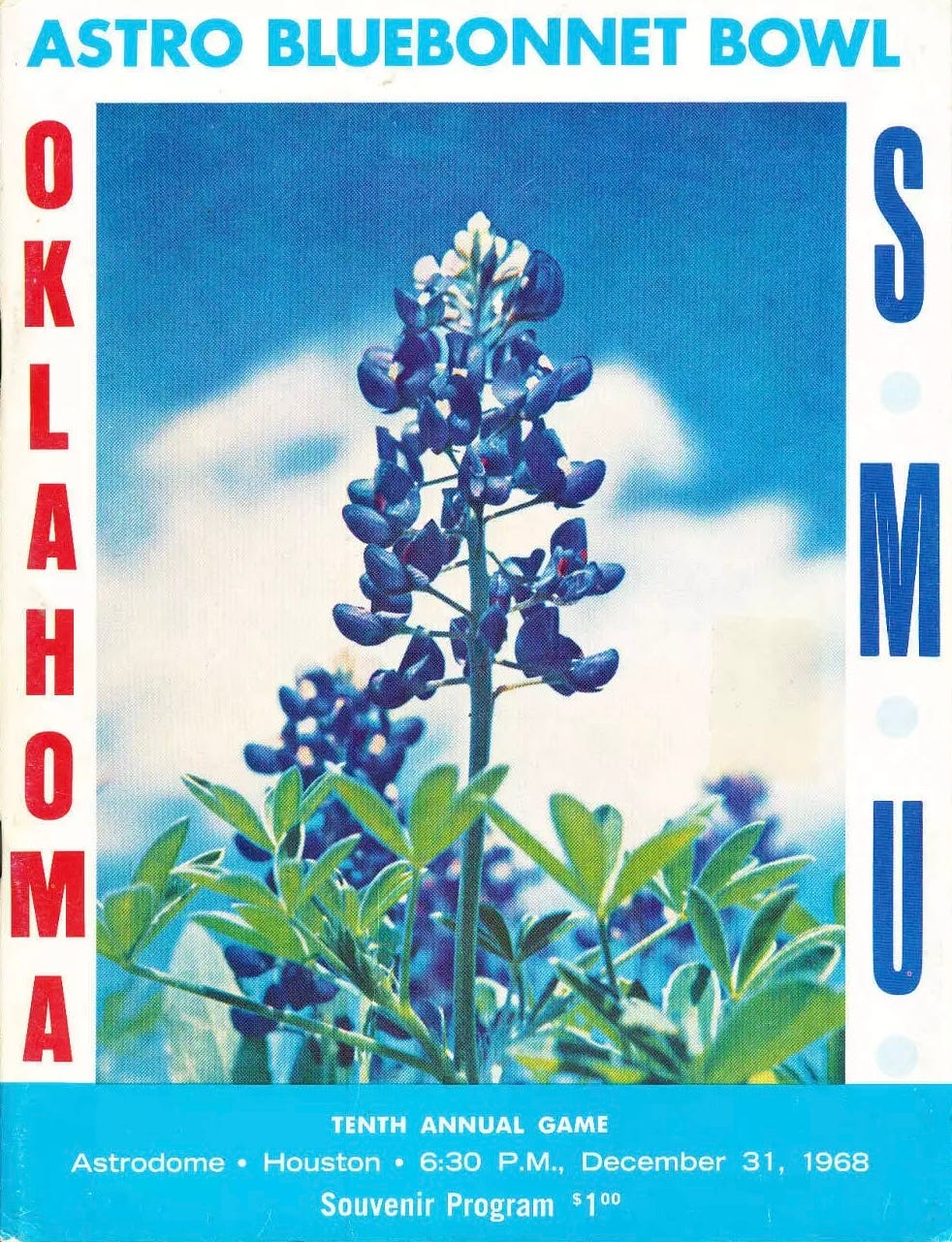The First New Year's Eve Bowl Game
There may have been an earlier college football bowl game on New Year's Eve, but the earliest I found came in 1968, when Houston hosted the Astro-Bluebonnet Bowl, raising issues we continue to witness in college football today.

The bowl began life in 1959 as the Bluebonnet Bowl and featured a team from Texas or Tulsa. It typically drew 50,000+ fans into Rice Stadium, especially when the Longhorns were one of the invitees. Played during the week before Christmas, many games were played in poor weather, and the 1967 game between Colorado and Miami drew only 30,156. Something had to be done.
Of course, Houston opened the Astrodome in 1965, and it became home to the Houston Oilers, the University of Houston football games, and Astros baseball games. So, some parties thought it made sense to make the bowl game an even bigger attraction by moving it to the Astrodome and playing on New Year's Eve.
The Houston Sports Association, led by former mayor Roy Hofheinz, secretly negotiated the switch with the NCAA and renamed the Astro-Bluebonnet Bowl. They didn't consult the Southwest Conference or the Cotton Bowl officials in Dallas. Despite the game being the day before and 250 miles away from the Cotton Bowl, many felt the move infringed on the Cotton Bowl's time and territory. Feathers, which are twice as big in Texas, were ruffled.
Publicly, the Executive Secretary of the Cotton Bowl dismissed Houston's move, saying:
I don't think it would affect the Cotton Bowl. Personally, I don't see New Year's Eve as a good time to have a ball game, TV-wise or spectator-wise.
'Bluebonnet Bowl Goes To Bubble New Year's Eve,' Monitor (McAllen, TX), August 7, 1968.
The Southwest Conference, whose champion played in the Cotton Bowl, was unaware of the change before the announcement. A Dallas-area columnist was unhappy about the deal, noting that it was all due to TV money, which went from $15,000 for the bowl's first year to $175,00 for the New Year's Eve game.
Sell-out deals like the NCAA made behind the Cotton Bowl make a national playoff scheme for college football all the more appetizing. College football puts on a panic act about losing its interest [to the pros] and then further dilutes the interest by squeezing two major bowls together.
Wilkins, Galyn, 'A Bowl Of Thanks For The NCAA,' Fort Worth Star-Telegram, August 8, 1968.
As you might expect, despite the ruffling of feathers by the New Year's Eve switcheroo, they were smoothed out in time for the November announcement that good old SMU, the third-place Southwest Conference team, would face Oklahoma, the second-place Big Eight team in the 1968 Astro-Bluebonnet matchup.

The game proved exciting, as 53,534 fans bought tickets, the largest crowd ever to see an indoor football game at that time. SMU trailed 14-7 entering the fourth quarter, but the game opened up as the Mustangs beat Oklahoma 28-27 by stopping their two-point conversion attempt with a minute left.
Since then, the number of FBS bowl games has increased from 10 in 1968 to 36 this year, and television has come to dominate college football, leading to the national playoffs the columnist dreamed of in 1968. On the other hand, the Astro-Bluebonnet Bowl wilted after 1987. The Houston Bowl succeeded it from 2000 to 2005, which was itself succeeded by the Texas Bowl, a game played today, New Year's Eve 2024.
That's the thing about bowls. What goes around comes around.
Click here for options on how to support this site beyond a free subscription.


Bluebonnet was on Mizlou if I remember right. Being from Arkansas and a kid I always thought it was associated with the margarine.
I remember watching that game. Chuck Hixson was the quarterback for SMU.